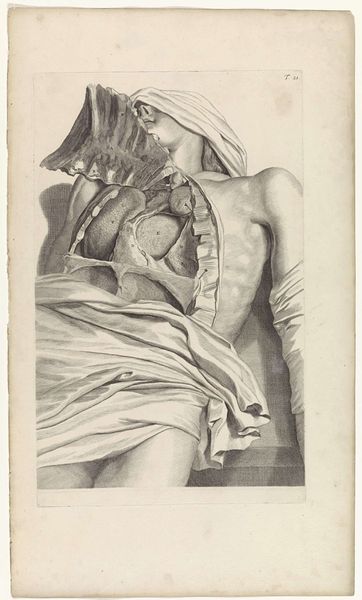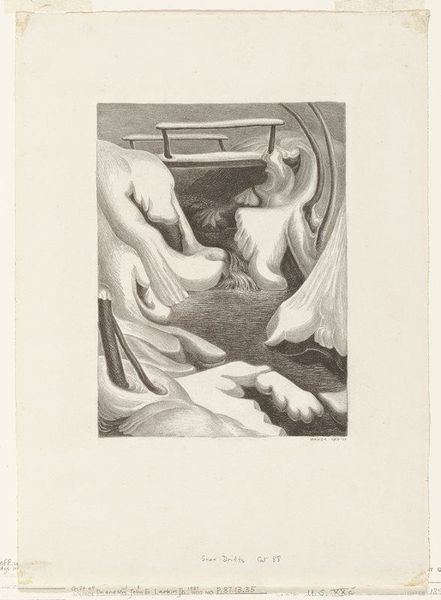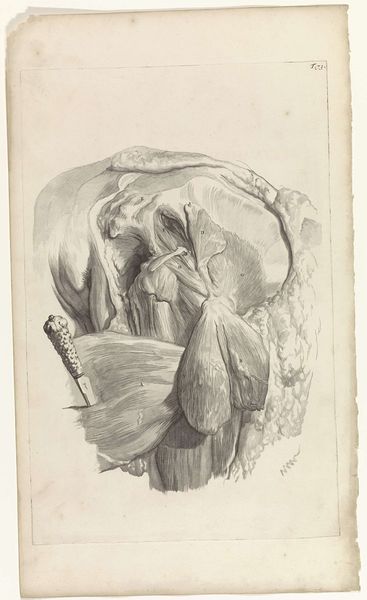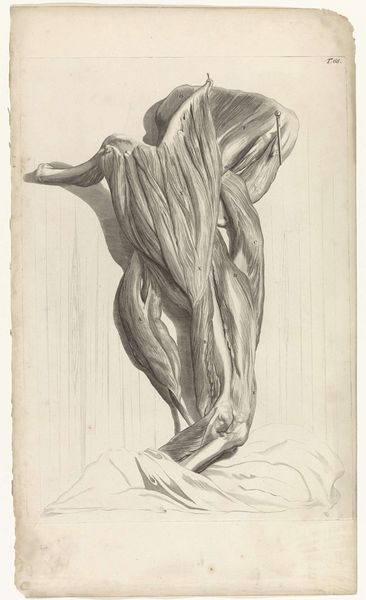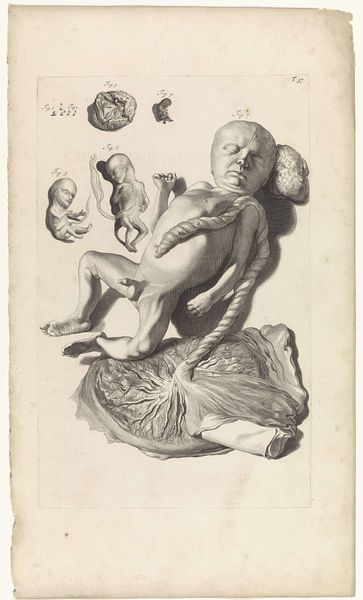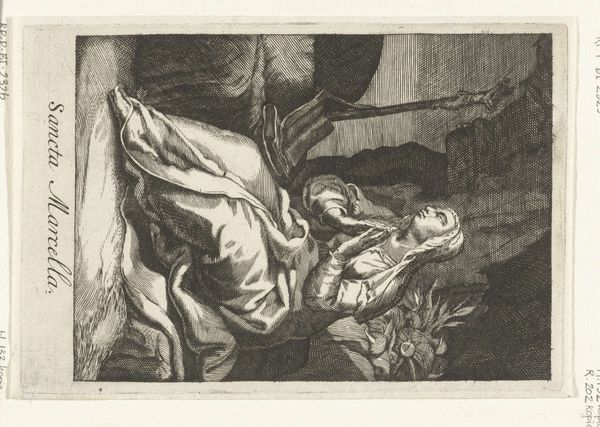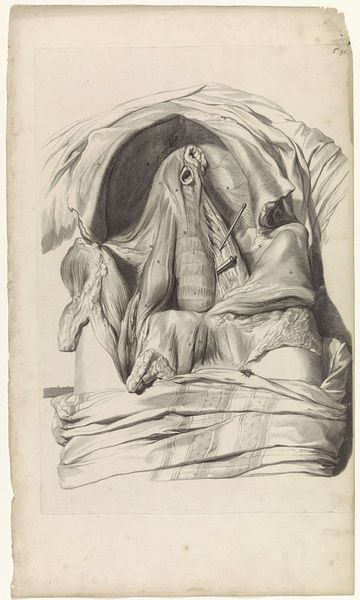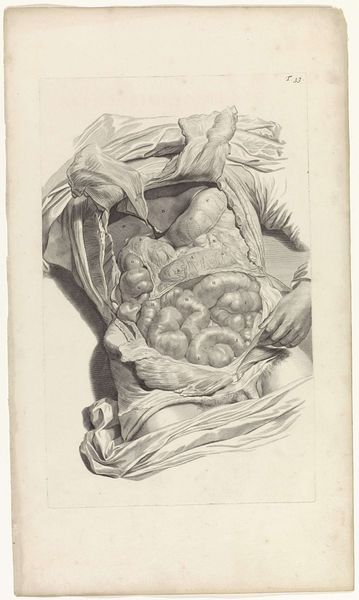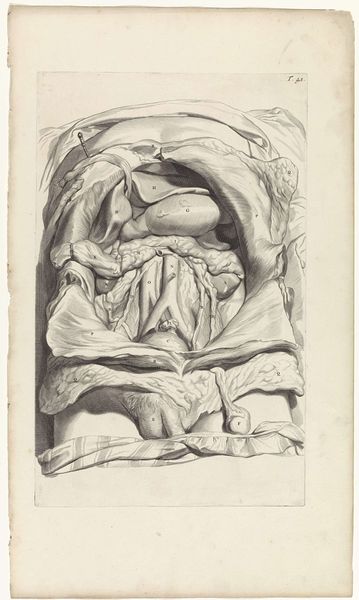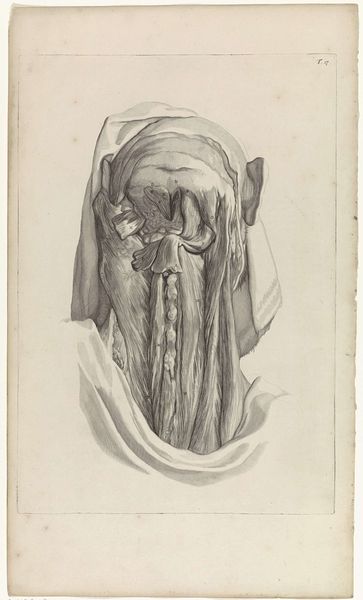
etching, engraving
#
medieval
#
etching
#
charcoal drawing
#
vanitas
#
history-painting
#
academic-art
#
nude
#
engraving
#
realism
Dimensions: width 332 mm, height 478 mm
Copyright: Rijks Museum: Open Domain
Pieter van Gunst made this anatomical study of a woman’s viscera as an engraving, sometime between 1659 and 1724, in the Netherlands. This isn’t just a scientific illustration; it’s also a cultural artifact that reflects the complex relationship between art, science, and society. Made in a time when anatomical knowledge was rapidly advancing, it shows the influence of the scientific revolution on art. It also suggests the tension between the era's growing empiricism and deeply entrenched social norms surrounding the body, particularly the female body. To truly understand this print, one must consider the institutions of science and art in the Netherlands at the time. University archives, medical publications, and the records of scientific societies can shed light on the role of anatomical studies in education and research. Art historical sources will show the cultural meanings that were attached to images of the body. Together, these avenues of research show the complex social forces that shaped its creation and reception.
Comments
No comments
Be the first to comment and join the conversation on the ultimate creative platform.


